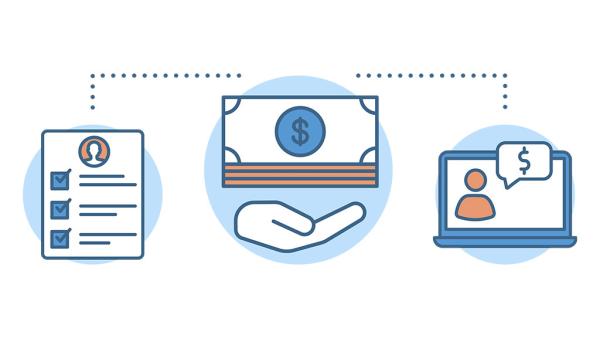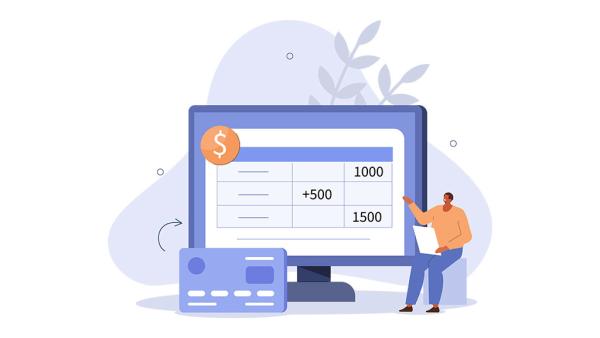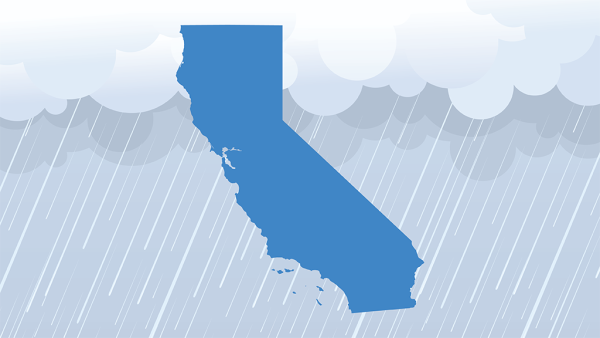
by Taxing Subjects | Feb 20, 2023 | Tax Tips and News
Filing an amended return used to mean completing a paper form, regardless of how taxpayers submitted the original return to the Internal Revenue Service. During the pandemic, paper-filed returns presented processing challenges that contributed to a historic backlog at the Internal Revenue Service.
Nearly two years after the IRS first began allowing electronic filing for Forms 1040-X, there is more good news for the roughly 3 million taxpayers expected to amend this year. Last week, the IRS announced that direct deposit is now available for refunds issued to taxpayers who file an amended return.
Why is the IRS now able to offer direct deposit for amended returns?
The IRS says recent system updates made the implementation of direct deposit for amended tax returns possible. This development represents the agency’s continued push to improve customer service, an effort ultimately bolstered by increased funding from legislation like the Inflation Reduction Act.
“Those filing amended returns can now enjoy the same speed and security of direct deposit as those filing an original Form 1040 tax return,” the IRS explains. “Taxpayers filing an original tax return using tax preparation software can file an electronic Form 1040-X if the software manufacturer offers that service.”
Will electronic filing and direct deposit help the IRS process amended returns faster?
The short answer is “no.”
The IRS is required to manually process all amended returns, which takes an average of 20 weeks, irrespective of the chosen filing method. However, the IRS says choosing e-file and direct deposit “cuts out the mail time” and “provides a convenient and secure way to receive refunds faster.”
Can I electronically file amended returns with Drake Tax®?
Drake Software customers do not have to wait for a program update to provide direct-deposit services to clients filing Forms 1040-X. Drake Tax has supported direct deposit for amended returns since the IRS announced its availability.
Source: IR-2023-22
– Article provided by Taxing Subjects.

by Taxing Subjects | Feb 18, 2023 | Tax Tips and News
In 2022, millions of Americans received special state-issued payments designed to provide economic relief to residents struggling with financial burdens exacerbated by issues ranging from the pandemic to natural disasters. One week after urging recipients to postpone filing their returns, the Internal Revenue Service has issued official guidance regarding the federal taxability of those payments.
Last Friday, the IRS clarified that one-time state payments that address general welfare or disaster relief would not be considered federally taxable. While some of these payments will automatically benefit from the agency declining to challenge their taxability, others must meet additional criteria to qualify.
Why did the IRS decide these payments were not federally taxable?
The IRS says a number of factors influenced their decision, including the start of filing season and the one-time nature of the payments. According to the agency, this decision ultimately serves “the interest of sound tax administration.”
Which special state payments are affected?
The following special state payments issued in 2022 will not be considered federally taxable, according to the State Payments page on IRS.gov:
The IRS says this treatment will only apply in Georgia, Massachusetts, South Carolina, and Virginia if recipients claimed the standard deduction or received no tax benefit when itemizing.
There could be some confusion in California
In January, the California Franchise Tax Board issued federal Forms 1099-MISC to taxpayers who received a Middle Class Tax Refund payment of $600 or more. While the MCTR is not considered taxable income at the state level, the board likely anticipated that the IRS would require taxpayers report these payments as federally taxable income.
Since many California taxpayers will likely have received these forms weeks ago, early filers may have incorrectly reported the payments as income. How the federal tax agency will handle those returns remains to be seen.
Source: IR-2023-23
– Article provided by Taxing Subjects.

by Taxing Subjects | Feb 14, 2023 | Tax Tips and News
As part of the Inflation Reduction Act of 2022, lawmakers made changes to the Clean Vehicle Credit that were meant to encourage the purchase of U.S.-made electric and fuel cell vehicles. Unfortunately, the criteria for qualifying vehicles has proven confusing for some taxpayers.
To provide clarity for those interested in claiming the credit, the Internal Revenue Service issued proposed regulations for final assembly and MSRP requirements earlier this year. That effort was continued last week, when the agency announced new guidance updating the vehicle classification standard that defines the different types of qualifying vehicles.
How was vehicle classification information for the Clean Vehicle Credit changed?
The vehicle classification standard for vans, sport utility vehicles, pickup trucks, and passenger vehicles now includes the fuel economy labeling regime determined by the EPA Administrator. As a result of this change—and to ensure taxpayers can readily find qualifying information—the IRS updated information under five FAQ topics:
However, the General Overview of Taxpayer Reliance on Guidance Published in the Internal Revenue Bulletin and FAQs page on IRS.gov notes that FAQs are not interchangeable with officially published guidance from the Internal Revenue Bulletin.
While the agency generally sees FAQs as merely a means of “quickly [communicating] information to the public on topics of frequent inquiry and general applicability,” they note “a taxpayer’s reasonable reliance on an FAQ (even one that is subsequently updated or modified) is relevant and will be considered in determining whether certain penalties apply.”
Source: IR-2023-18
– Article provided by Taxing Subjects.

by Taxing Subjects | Jan 13, 2023 | Tax Tips and News
Californians have been battered by torrential rains and flooding from a recent series of storms. To help victims recover, the Internal Revenue Service recently announced tax relief for federally declared disaster areas in the state.
Which California counties are getting tax relief?
Initially published on January 10, the news release was updated yesterday to include 10 new affected areas. Now, the relief applies to 41 counties across the state:
- Alameda
- Colusa
- Contra Costa
- El Dorado
- Fresno
- Glenn
- Humboldt
- Kings
- Lake
- Los Angeles
- Madera
- Marin
- Mariposa
- Mendocino
- Merced
- Mono
- Monterey
- Napa
- Orange
- Placer
- Riverside
- Sacramento
- San Benito
- San Bernardino
- San Diego
- San Francisco
- San Joaquin
- San Luis Obispo
- San Mateo
- Santa Barbara
- Santa Clara
- Santa Cruz
- Solano
- Sonoma
- Stanislaus
- Sutter
- Tehama
- Tulare
- Ventura
- Yolo
- Yuba
Visit the IRS’s Tax Relief in Disaster Situations page for the most up-to-date list of eligible locations.
What are the terms of the California tax relief?
Tax relief generally provides qualifying individuals and businesses residing in federally declared disaster areas additional time to meet filing and payment deadlines. The California relief pushes back a number of deadlines beginning January 8, 2023, until May 15, 2023, including the following:
- January 17, 2023, quarterly estimated tax payment deadline
- January 31, 2023, quarterly payroll and excise tax filing deadline
- March 1, 2023, farmers’ filing and payment deadline (if they forgo quarterly estimated payments)
- April 18, 2023, quarterly estimated tax payment deadline
- April 18, 2023, individual income tax return filing and payment deadline
- April 30, 2023, quarterly payroll and excise tax filing deadline
This relief also extends to individuals and businesses with uninsured or unreimbursed losses resulting from the storms. Qualifying victims “can choose to claim [those losses] on either the return for the year the loss occurred (in this instance, the 2023 return normally filed next year), or the return for the prior year (2022, normally filed this tax season).”
However, when claiming uninsured or unreimbursed losses, taxpayers should review Publication 547 and remember to “write the FEMA declaration number—3691-EM—on any return claiming a loss.”
Sources: IR-2023-03; “Storms keep pummeling California, causing widespread flooding and evacuations,” NPR.org
– Article provided by Taxing Subjects.

by Taxing Subjects | Jan 13, 2023 | Tax Tips and News
The wait is over for tax professionals eager to learn when the 2023 filing season will begin. Today, the Internal Revenue Service revealed they will start accepting and processing individual returns on January 23, 2023. The federal tax agency reassures that the service it provides this year will be improved by the recent hiring of more than 5,000 telephone and in-person staff.
This announcement caps off several busy weeks for the federal tax agency, which have included the publication of guidance related to clean vehicles, the completion of automatic corrections for the 2020 unemployment compensation exclusion, and the extension of deadlines for California storm victims.
When is Tax Day 2023?
The deadline for filing an individual return, requesting an extension, and paying tax owed is April 18, 2023 due to the Emancipation Day holiday.
How long will it take the IRS to issue tax refunds?
The IRS predicts that tax refunds generally will be issued within 21 days if the following criteria are met:
- The return is filed electronically
- The taxpayer chooses direct deposit
- The return has no issues
However, a provision in the PATH Act prevents the IRS from issuing refunds for any return claiming the Earned Income Tax Credit or Additional Child Tax Credit until February 15. This delay is designed to provide the agency with additional time to combat fraudulent tax returns.
Do I have to wait until January 23 to transmit client returns to the IRS?
Tax professionals using Drake Tax® do not have to wait until January 23 to submit completed individual client returns. Drake Software places returns received before the start of filing season in a queue and automatically transmits them to the IRS when the agency begins processing.
Source: IR-2023-05
– Article provided by Taxing Subjects.









